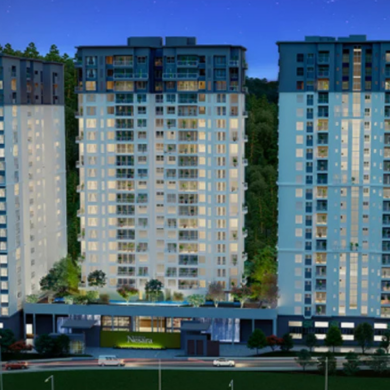
The real estate sector is one of the most globally recognised sectors. The Indian real estate sector contributes 5-6 per cent to the country’s Gross Domestic Product (GDP) and is the second largest employer after agriculture. The market is expected to touch US$ 180 billion by 2020 and is slated to grow at 30 per cent over the next decade. Further, the KPMG report titled Indian Real Estate – Opening Doors, adds that the industry’s contribution to GDP is set to increase to 13% in 2028. Technology in real estate is going to play a key role in achieving the estimated growth rate in years to come.
Technological advancements have improved the quality of life with availability of quality products across the industries. Real estate sector too is seeing newer technologies as older technologies and traditional construction methods are time consuming. Longer project construction life cycle results in considerable cost escalation. As a result, these technologies are gradually nearing end and are becoming obsolete.
Today, developers are incorporating technological innovations to enhance their business process and gaining efficiency in various construction activities. For example, the newer technology has enabled concrete to be poured continuously without interruption for constructing quality structures. Technical advancement has given rise to Ready Mix Concreate (RMC) that bring about reduced cement consumption by producing concrete under controlled conditions. Hollow blocks are being used in high rise building that possess higher concrete strength, consume lesser raw material and are structurally efficient. Technique such as dry-wall construction is being used to construct fire-resistant ceilings, interior walls and floors through plastered board. Evidently there is increased use of shuttering technologies as well. Usage of cut and bend steel results in lower production cost due to low level of inventories, reduced wastage and labor cost savings. An improved cement mix is helping in containing the CO2 emission in addition to substantial operational cost savings.
Additionally, a growing trend toward implementation of ERP software is being witnessed in the industry which improves efficiency, productivity and streamlines processes.
There are various technologies that are available and can be practiced successfully. A few popular ones are:
- Building Information Modelling (BIM): The concept has been widely used within the industry over the last few years across the West, including Europe. It represents the physical and functional characteristics of a building in a digital format. BIM helps professionals in mapping out a blue print of the construction plan; it saves time, allows accuracy in planning and scope for changes later. It also acts as a knowledge resource that contains all data required for a proper analysis. BIM goes beyond design (length, breadth and height); it is five dimensional in its approach as it also projects time and costs for projects.
- MIVAN Technology: Aluminium formwork, commonly known as MIVAN technology, is the perfect replacement for the old and laborious construction methods. With the help of this technology, aluminium forms or panels of required sizes are used to construct walls and slabs in a very short period of time. A cost-effective solution that saves time and provides desired quality, this technology is a saviour in many ways. Some advantages are:
– It reduces the turnaround time to half, compared to the conventional methods
– It requires less labour thereby, reducing costs and hazardous risks
– It brings down the slab-to-slab cycle to between seven and 10 days
– It provides increased seismic resistance
– It contributes to increased durability and reduced leakages
Use of formwork basically reduces the gestation period and brings down costs to a great extent. This technology is widely used in Europe and MiddleEast by construction companies to complete projects faster.
- 3D Printing or additive building construction: A lot of time is spent on sketching project designs, on which architects go back and forth with clients to get what they can both agree upon. The traditional two-dimensional design not only consumes a lot of time but also gives only a limited idea about what the building is going to look like. Architects now use 3D printing to solve the problem. This method of design printing provides much better clarity as far as design is concerned and also allows for a quicker decision making process. With the help of this technique, construction firms have been able to reduce the lead production time by about 50 per cent.
Technology allows people to measure the project progress. Machines are available that have capabilities to offer quality consistently and help in tracking carrying cost. In a labour intensive sector such as construction where output and quality varies based on location and project, it possess a huge challenge to deliver quality with time and cost savings in the absence of technology.
The real estate industry would do well backed by the latest technologies, changing the way the industry operates while simultaneously help create faster and sturdier structures.







